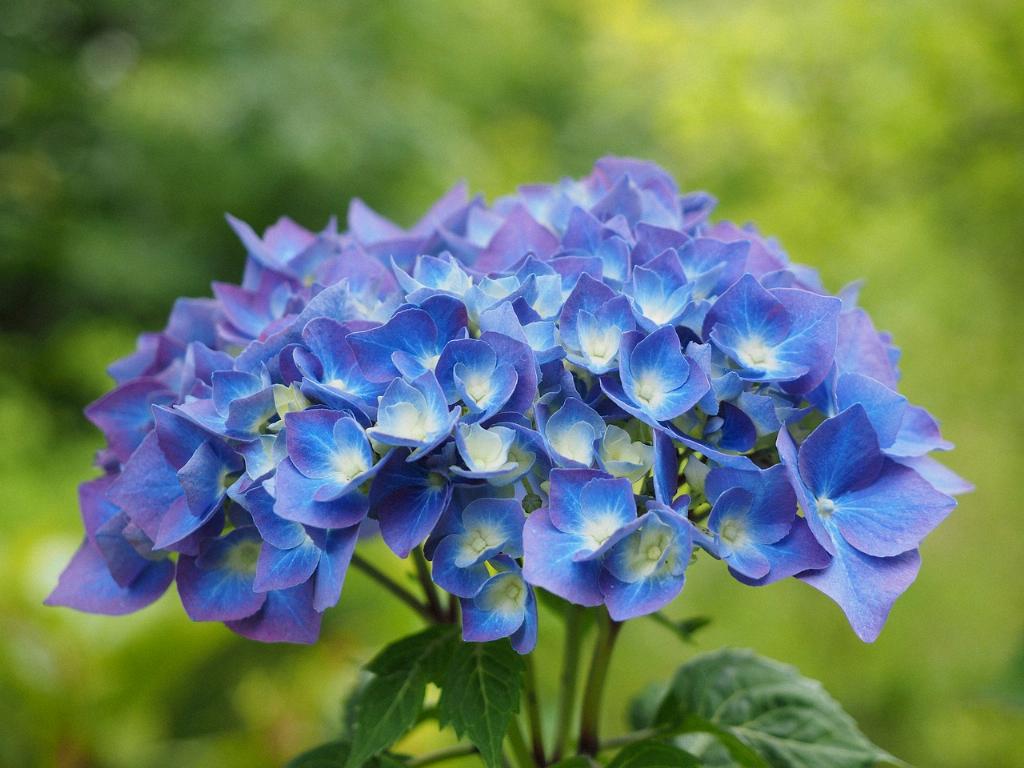Hydrangeas are stunning flowers, known for their vibrant colors and large, showy blooms. However, if your hydrangea is not blooming as expected, there could be several reasons behind this issue. One common factor could be over-fertilization or using the wrong type of fertilizer, which can hinder the blooming process.
Choosing the Right Fertilizer for Your Hydrangea
When it comes to fertilizing your hydrangea, it’s essential to use the correct type of fertilizer in the right amounts. A balanced fertilizer with equal parts of nitrogen, phosphorus, and potassium can help promote healthy growth and abundant blooms. Avoid using high-nitrogen fertilizers, as they can result in lush foliage but fewer blooms.
Proper Pruning Techniques for Blooming Hydrangeas
Pruning plays a vital role in encouraging your hydrangea to bloom. Knowing the type of hydrangea you have is crucial, as different varieties bloom on old wood, new wood, or both. For varieties that bloom on old wood, such as mophead hydrangeas, prune right after flowering to avoid cutting off next year’s flower buds.
Creating the Ideal Growing Conditions for Your Hydrangea
Hydrangeas thrive in well-draining soil rich in organic matter. Ensure your hydrangea receives adequate sunlight, typically in the morning with some afternoon shade to prevent scorching. Consistent watering is crucial, especially during hot and dry periods, to keep the soil evenly moist but not waterlogged.
Adjusting Soil pH for Colorful Blooms
The pH level of your soil can influence the color of your hydrangea blooms. For pink blooms, aim for slightly acidic soil with a pH between 6.0 and 6.9. To encourage blue blooms, lower the pH to around 5.2 to 5.5 by using aluminum sulfate. Regular soil testing can help you maintain the optimal pH for your desired bloom color.
Protecting Your Hydrangea During Harsh Winters
Winter protection is essential, especially for hydrangeas in colder climates. Mulch around the base of the plant to insulate the roots and protect them from freezing temperatures. Consider erecting a burlap windbreak or wrapping the plant in burlap to shield it from harsh winter winds and prevent frost damage.
Dealing with Pests and Diseases Effectively
Keep an eye out for common hydrangea pests like aphids, spider mites, and powdery mildew, which can hinder blooming and overall plant health. Regularly inspect your hydrangea for signs of pests and diseases, and treat them promptly using insecticidal soap, neem oil, or other organic solutions to prevent infestations.
Encouraging Blooming Through Proper Care and Maintenance
Consistent care and maintenance are key to ensuring your hydrangea blooms profusely year after year. Stay diligent with watering, fertilizing, pruning, and soil management practices to create an environment that supports healthy growth and abundant blooms. Your efforts will be rewarded with a stunning display of colorful hydrangea flowers.
Seeking Professional Advice for Stubborn Hydrangeas
If your hydrangea continues to struggle with blooming despite your best efforts, consider seeking advice from a local horticulturist or garden center. They can provide personalized recommendations based on your specific growing conditions and help troubleshoot any underlying issues that may be affecting your hydrangea’s blooming performance.
Enjoying the Fruits of Your Labor
Watching your hydrangea burst into bloom is a rewarding experience that signifies your hard work and dedication to proper plant care. Take the time to admire and appreciate the beauty of your hydrangea flowers, knowing that your efforts have contributed to their stunning display and vibrant colors.
Celebrating Blooming Success with Your Hydrangea
Each blooming season with your hydrangea is a celebration of nature’s beauty and your role in nurturing a thriving plant. Embrace the joy of witnessing your hydrangea come alive with colorful blooms, knowing that your care and attention have played a significant part in creating this delightful floral spectacle in your garden.
Continuing to Care for Your Hydrangea for Long-Term Blooming Success
Maintaining consistent care and vigilance over your hydrangea’s growing conditions will ensure ongoing blooming success in the years to come. By following proper planting, watering, fertilizing, and pruning practices, you can enjoy a continuous cycle of vibrant blooms that add beauty and charm to your outdoor space season after season.

